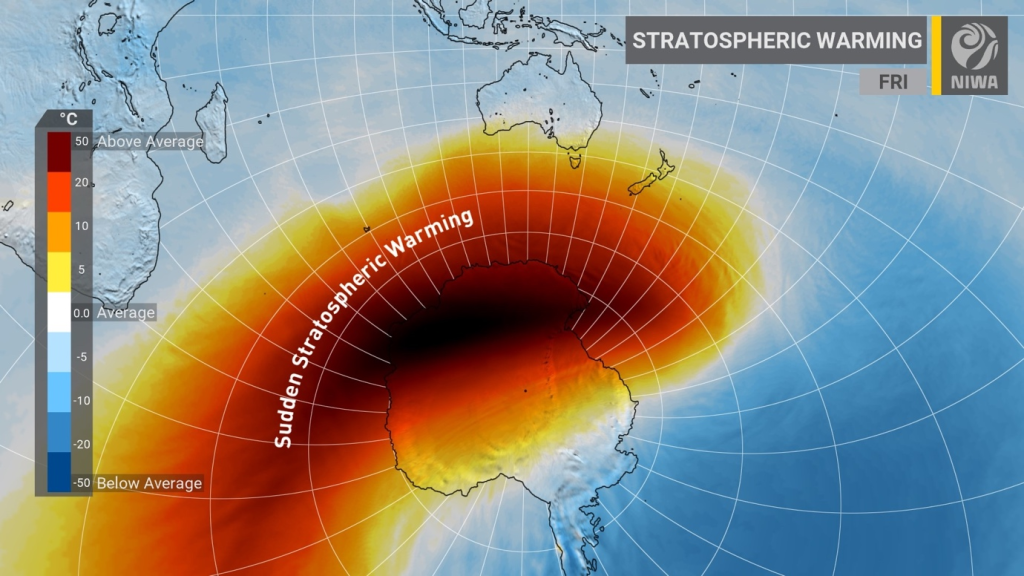Beware the Black Swan
- Briefing Note 486
While Australia infamously prides itself on being a land conditioned to droughts and flooding rains, extreme weather and climate events of the past few years have tested our resilience, leaving many communities rattled and struggling to put their lives back together. The 2019/2020 bushfire season was beyond anything experienced in living memory and was closely followed by 3 consecutive La Niñas, with widespread devastating storms and floods. According to the Insurance Council of Australia (ICA) the 2022 SE Queensland and NSW Floods were the most expensive natural disaster in Australia’s history, with total insurance bills during the “triple dip” La Niña exceeding $12B (ICA 2022).
It is now well understood that tropical climate drivers, the El Niño Southern Oscillation (ENSO) and Indian Ocean Dipole (IOD), have a strong influence on the weather extremes we experience. In general terms: El Niño and IOD positive typically bring drought and bushfire weather to the eastern states, while La Niña and IOD negative deliver flooding rains. These relationships can provide some predictability for the coming season.
The Bureau of Meteorology Southern Oscillation Index (SOI) value for May was -18, which is the lowest May value since 1997. Negative SOI is indicative of El Niño, and the 1997 El Niño was one of the strongest and most impactful ever observed. In early July the World Meteorological Organisation (WMO) declared El Niño conditions had developed in the tropical Pacific for the first time in seven years.
Seasonal forecasts from all major modelling groups have been consistent in projecting a return to at least moderate El Niño this summer (Figure 1). The Indian Ocean is currently synchronised to the Pacific, with most models predicting strong IOD positive developing by spring (Figure 2). For Australia this likely means a return to drought and bushfire—with the obvious question being, will it be like Black Summer all over again? The simple answer is probably not…unless something unexpected happens.


The Black Summer fire season was extraordinary (Canadell et al 2021); it occurred due to the culmination of multiple factors, including protracted drought and a favourable configuration of tropical climate drivers. Global warming also played a role, with an Oldenborgh et al (2020) attribution study showing that warming already experienced increased the likelihood of the 2019/2020 bushfire season by ~30%. Attribution studies typically try to understand the role of anthropogenic warming in driving extreme events, but one major driver of the Black Summer fires was completely unexpected. The difficulty with seasonal forecasts and climate projections is accounting for the unexpected: either because a phenomenon is understood and not predictable, or because it has not previously been observed.
The phrase “black swan” is a metaphor that has been around since the 2nd century and is used to describe unexpected events of large magnitude and consequence. It arose at a time when black swans were presumed not to exist, but the term took on an even more nuanced meaning in the 16th century when Dutch explorers discovered black swans in Western Australia. The term is now used to describe an extreme event, with high consequence, which was not predicted, but perhaps in hindsight should have been. The catastrophic weather of the past few years occurred in conjunction with climate forcing events that were not predicted by any weather or climate forecast models.
Starting in September 2019 a sudden warming of the stratosphere occurred (Figure 3) which perturbed westerly winds over the Southern Ocean resulting in increased frontal activity over southeast Australia. Fronts in spring and summer are one of the key drivers of dangerous bushfire weather and dust storms. They are usually proceeded by hot dry north-westerly winds which desiccate the landscape meaning bushfires are easier to start and can quickly grow to become out of control. Sudden stratospheric warmings (SSW) are commonly observed in the northern hemisphere, but were almost unprecedented in the southern hemisphere, with only one previously observed in 2002. Although the SSW was unexpected, the Bureau of Meteorology quickly realised the implications and issued warnings that it could lead to drought and severe bushfire weather (Hendon et al 2019). By spring 2019 the landscape was already extremely dry, and the climate drivers were aligned for a dangerous bushfire season. The SSW could be considered the “black swan” that amplified it from dangerous to catastrophic.
But that’s not all: one of the main complexities of the climate system is that nothing happens in isolation, and this is one of the factors which makes attribution studies so difficult. Recent research shows the Black Summer bushfires put such large quantities of ash and smoke into the stratosphere that it strengthened the polar vortex, prolonged the ozone hole and led to unusually cool southern hemisphere temperatures in spring 2020 (Damany-Pearce et al 2022). More importantly, Fasullo et al (2023) found that the bushfire emissions increased cloud albedo across the Pacific, leading to sea surface cooling and that this was likely a major contributor to the strength and persistence of the 2020–2022 strong La Niña events.
Connecting the dots, the September 2019 SSW was the “black swan” that predicated 3 years of climate turmoil, including some of the most disruptive and costly natural catastrophes in Australia’s history. So what is the chance of another SSW any time soon? A modelling study by Jucker et al (2021) showed that SSW could be expected to occur about once every 22-years. With accurate measurements of the stratosphere only available since the late 1970s it is understandable that this event came as a surprise. However, Jucker et al (2021) did have some good news; their climate model simulations showed that under a warmer climate SSW should become less frequent—about once every 300 years.

During January 2022, while Queensland was busy cleaning up flood damage from Tropical Cyclone Tiffany, another spectacular and unexpected climate forcing event unfolded in the Pacific. On January 15th the Hunga Tonga-Hunga Ha’apai submarine volcano erupted, triggering a giant atmospheric shockwave and tsunami—the eruption was so violent it sent shockwaves into the ionosphere (Astafyeva et al 2022). It is well understood that volcanic eruptions can influence climate, typically by injecting sulphur dioxide into the stratosphere, which prevents some incoming solar radiation from reaching the surface leading to global cooling. The 1991 eruption of Mt Pinatubo lead to measurable cooling of the climate by ~1C for several years; the Mt Tambora eruption in 1815 caused the infamous “year without a summer” (Fasullo et al 2017); and the Rinjani (Samalas) eruption in 1257 was one of the most powerful in the Holocene and may have triggered the onset of the Little Ice Age (Newhall 2018).
But the Tonga eruption was different; instead of sulphur dioxide, it injected vapourised sea water into the stratosphere. Water vapour is the planet’s most common greenhouse gas. While sulphur dioxide prevents sunlight from entering earth’s atmosphere, water vapour prevents that energy from leaving. The climate impacts of this eruption are highly uncertain because such an event has never been observed. However, a recent modelling study by Jenkins et al (2023) estimates the radiative response to the Tonga eruption will warm earth’s climate and push global warming beyond the Paris Agreement target of 1.5C. Even without the Tonga eruption, global temperatures tend to increase during El Niño, meaning this coming summer is likely to be much hotter than the last few years, with the UK Met Office predicting a 98% chance that one of next five years will be the warmest year on record for the globe—at the time of writing, the world has just experienced it’s hottest days ever on July 3rd and 4th, with global average temperature exceeding 17C for the first time.
So, as we stare down the barrel of a potentially extreme El Niño, coupled to IOD positive, let us hope that is all we must deal with, and we can finally catch a break from the dreaded “black swans”.
References
Astafyeva, E., B. Maletckii, T. D. Mikesell, E. Munaibari, M. Ravanelli, P. Coisson, F. Manta, and L. Rolland, 2022: The 15 January 2022 Hunga Tonga Eruption History as Inferred From Ionospheric Observations. Geophys. Res. Lett., 49, https://doi.org/10.1029/2022gl098827.
Canadell, J. G., C. P. (Mick) Meyer, G. D. Cook, A. Dowdy, P. R. Briggs, J. Knauer, A. Pepler, and V. Haverd, 2021: Multi-decadal increase of forest burned area in Australia is linked to climate change. Nat. Commun., 12, 6921, https://doi.org/10.1038/s41467-021-27225-4.
Damany-Pearce, L., B. Johnson, A. Wells, M. Osborne, J. Allan, C. Belcher, A. Jones, and J. Haywood, 2022: Australian wildfires cause the largest stratospheric warming since Pinatubo and extends the lifetime of the Antarctic ozone hole. Sci. Rep., 12, 12665, https://doi.org/10.1038/s41598-022-15794-3.
Fasullo, J. T., N. Rosenbloom, and R. Buchholz, 2023: A multiyear tropical Pacific cooling response to recent Australian wildfires in CESM2. Sci. Adv., 9, eadg1213, https://doi.org/10.1126/sciadv.adg1213.
Fasullo, J. T., R. Tomas, S. Stevenson, B. Otto-Bliesner, E. Brady, and E. Wahl, 2017: The amplifying influence of increased ocean stratification on a future year without a summer. Nat. Commun., 8, 1236, https://doi.org/10.1038/s41467-017-01302-z.
Hendon, H. H., and Coauthors, 2019: Rare forecasted climate event under way in the Southern Hemisphere. Nature, 573, 495–495, https://doi.org/10.1038/d41586-019-02858-0.
Jenkins, S., C. Smith, M. Allen, and R. Grainger, 2023: Tonga eruption increases chance of temporary surface temperature anomaly above 1.5 °C. Nat. Clim. Chang., 13, 127–129, https://doi.org/10.1038/s41558-022-01568-2.
Jucker, M., T. Reichler, and D. W. Waugh, 2021: How Frequent Are Antarctic Sudden Stratospheric Warmings in Present and Future Climate? Geophys. Res. Lett., 48, https://doi.org/10.1029/2021gl093215.
Newhall, C., S. Self, and A. Robock, 2018: Anticipating future Volcanic Explosivity Index (VEI) 7 eruptions and their chilling impacts. Geosphere, 14, 572–603, https://doi.org/10.1130/GES01513.1.
Oldenborgh, G. J. V., and Coauthors, 2020: Attribution of the Australian bushfire risk to anthropogenic climate change. Natural Hazards and Earth System Sciences, 1–46, https://doi.org/10.5194/nhess-2020-69
About the author/s

Stuart Browning
Stuart is Risk Frontiers' Climate Risk Scientist, with extensive experience studying the weather and climate in Australian and the Asia-Pacific region. His focus is to understand the large-scale climatic drivers of extreme weather events to better quantify risk over seasonal to multi-decadal timescales, using reanalysis data, model simulations, and paleoclimate records.
